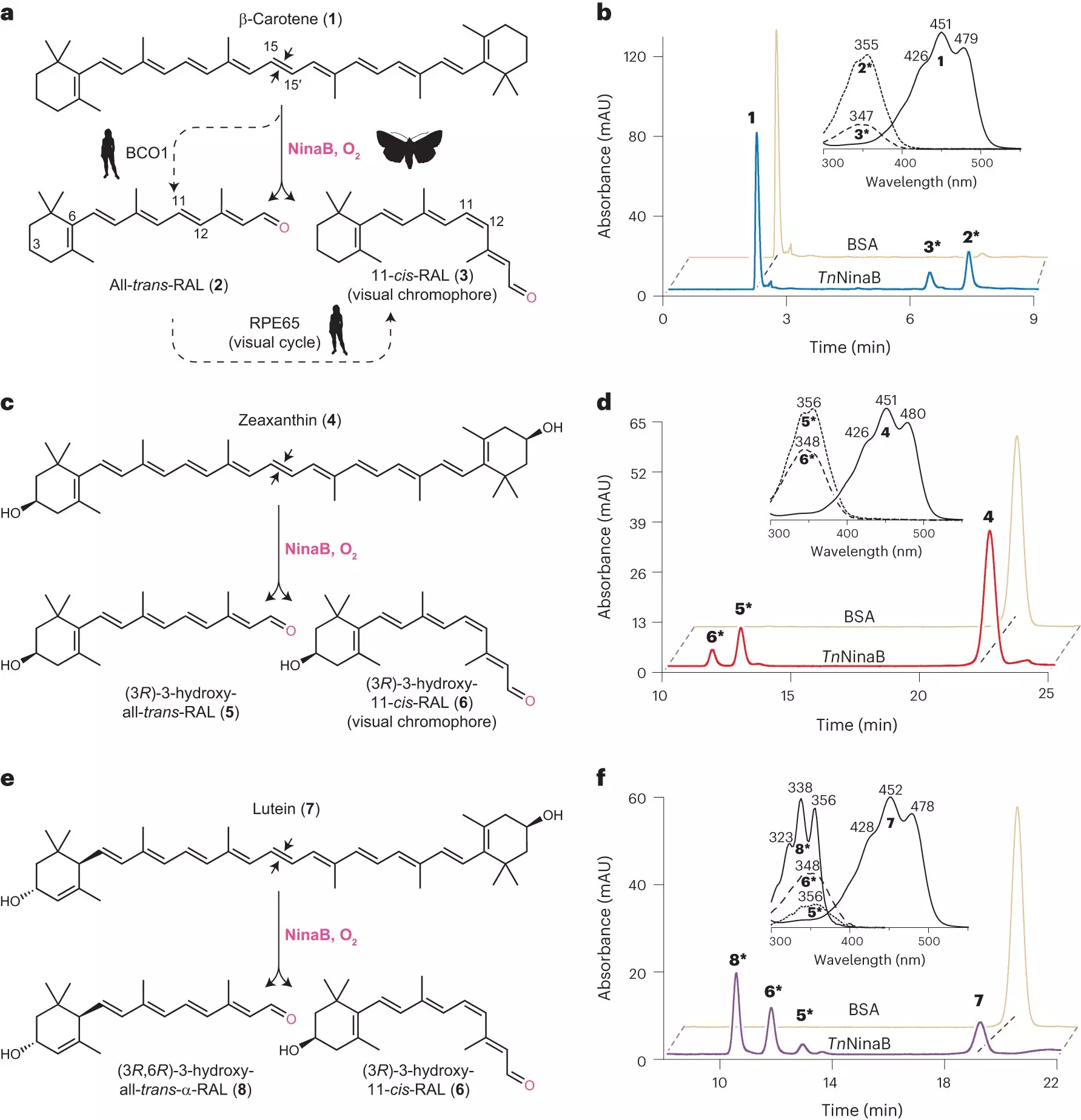A recent study conducted by researchers at the University of California, Irvine has shed light on the intricate similarities and differences between the production of the essential light-absorbing molecule 11-cis-retinal in humans and insects. This molecule, also known as the “visual chromophore,” plays a crucial role in the functioning of the retina and is essential for maintaining proper vision. The findings of the study, published in the journal Nature Chemical Biology, have deepened our understanding of how mutations in the RPE65 enzyme can lead to retinal diseases, particularly Leber congenital amaurosis, a devastating childhood blinding disease.
The research challenges conventional assumptions about the similarities and differences in human and insect vision. While both humans and insects rely on enzymes such as RPE65 and NinaB for the synthesis of 11-cis-retinal, the study revealed distinct differences in the processes through which these molecules are produced. Despite sharing a common evolutionary origin and possessing similar three-dimensional structures, the enzymes exhibit variations in the way they generate 11-cis-retinal.
The production of 11-cis-retinal commences with the consumption of certain foods rich in compounds like beta-carotene, such as carrots and pumpkins. These nutrients are metabolized by carotenoid cleavage enzymes, including NinaB and RPE65, to facilitate the synthesis of 11-cis-retinal. While humans require both RPE65 and another enzyme for this process, insects can achieve the conversion with just NinaB. Understanding how NinaB can combine these steps into a single reaction, as well as the functional relationships between NinaB and RPE65, was a primary objective of the study.
Lead author Yasmeen Solano, a graduate student involved in the research, highlighted the structural similarities between NinaB and RPE65, despite differences in their catalytic activities. The study delved into the unique features of NinaB’s structure, providing valuable insights into the catalytic mechanisms necessary for the function of retinal visual pigments. Additionally, the researchers were able to uncover previously unresolved details about a key portion of the RPE65 enzyme, which is crucial for addressing loss-of-function mutations in RPE65 that contribute to visual impairments.
The study’s findings offer a deeper understanding of the complex pathways involved in vision in humans and insects. By elucidating the shared origins and distinctive characteristics of the enzymes responsible for 11-cis-retinal synthesis, the research paves the way for future investigations into the treatment and management of retinal diseases.



Leave a Reply